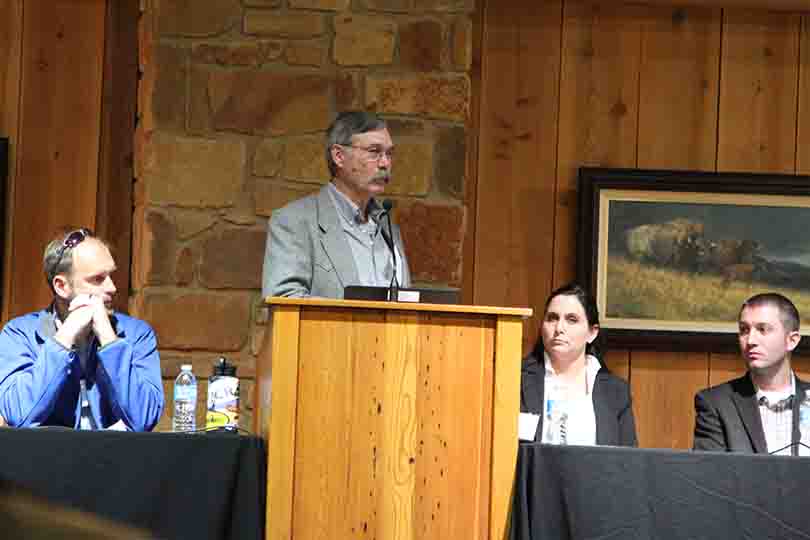By Jessica Domel
News Editor
Researchers may have found a way to positively identify deer that are infected with the fatal Chronic Wasting Disease (CWD).
Tuesday, scientists from across the nation gathered in Austin with stakeholders and representatives at a CWD Ante-Mortem Testing Symposium hosted by the Texas Parks and Wildlife Department (TPWD) and Texas Animal Health Commission (TAHC).
“Over the last year, all of us inside the deer management community were compelled to confront one of the most challenging, the most complicated and, dare I say, one of the most contentious wildlife disease issues we’ve had to deal with in our fine state,” Carter Smith, TPWD executive director, said.
TPWD and TAHC hosted the meeting for stakeholders to see how the deer and wildlife community can work together to improve, evolve and enhance disease surveillance, detection and management.
“We stand united as a group of deer enthusiasts,” Smith told the crowd.
Researchers told the group of stakeholders there are several live tests available now that have not yet been approved by state and national authorities to detect CWD in cervids like deer, elk and moose.
A post-mortem test has already been approved and is used by state officials.
One of the live tests researchers are working on requires tonsil tissue from a living specimen. Another requires a rectal muscosa biopsy. There are strengths and weaknesses to both tests.
Part of the problem with finding a test that accurately detects CWD lies within the nature of the disease itself.
It’s silent, or undetectable, for months after a cervid is first infected, and there are no outward signs at that point in the infection that an animal has the disease. It’s not until later, when the animal is severely affected, that outward signs are evident.
Between the time the animal is infected until its death, it’s actively emitting prions into the environment around it. The prions, which cannot be destroyed, then live on and infect other cervids.
“Chronic Wasting Disease can be quite devastating to the deer population if it spreads into the wild,” Clarence “Buddy” Earles, chair of the Texas Farm Bureau (TFB) Wildlife Committee, said. “Right now, it is still, as far as I understand, contained in two different areas. We need to keep an eye on it because it could hurt the deer population and, of course, hunting and wildlife as we know it in the state of Texas.”
Earles attend the meeting in Austin with two other TFB representatives.
State Representatives Kyle Kacal and Drew Springer were also in attendance, as was a representative of U.S. Senator John Cornyn.
“Wildlife and outdoor tourism are important to farmers and ranchers,” Kacal said. “White-tailed deer is the number one driver of that. We need to be proactive. We need to be involved in every aspect of the CWD discussion.”
Kacal went on to say the state needs a resolution for this important issue because hunting is important to Texas. In fact, it’s so important that in November, Texans opted to pass an amendment to the state constitution protecting the right to hunt or fish.
“When you think about Texas, and you’re not blessed to live inside its borders, it’s the wild west. It’s cowboys, and it’s big Texas white-tailed (deer),” Kacal said. “It’s vital to our economy. It’s vital to our mystique. It’s vital to our way of life. It’s a big, big part of who we are.”
Although CWD has only been found in captive deer in Texas, Springer explains the tracking and research of the disease is important to all Texans.
“Deer in Texas are owned by the state. We want to make sure we have a healthy herd,” Springer said. “Hunting is a huge part of the Texas landscape.”
Farmers, ranchers and landowners often use their land with deer on it to supplement their income and food supply.
“We need to make sure we’re protecting that,” Springer said.
The legislature is not currently in session, but Springer notes he and others in the Texas House and Senate are following news of CWD.
Currently, there is no legislation regarding CWD in the works.
“We’re not even going to wait until the legislature is back in session,” Springer said. “There is a handful of state representatives who want to address this issue with all the key stakeholders. A lot of them are here to make sure we address

